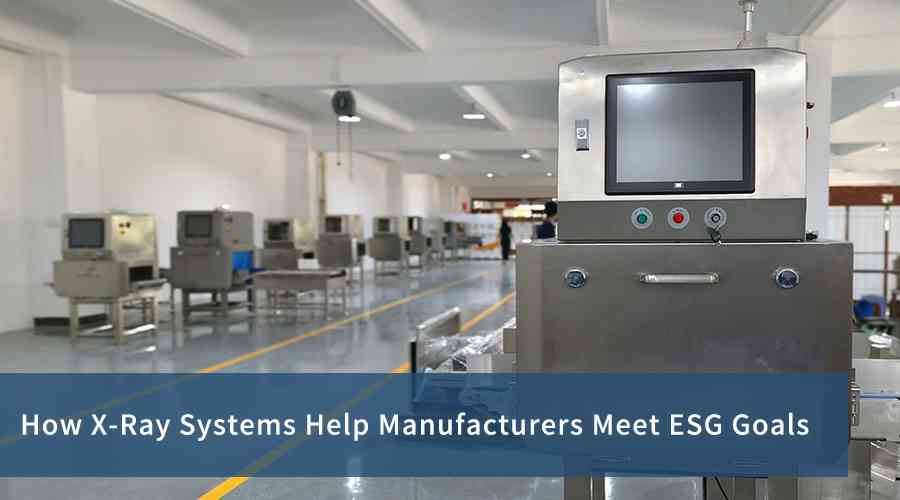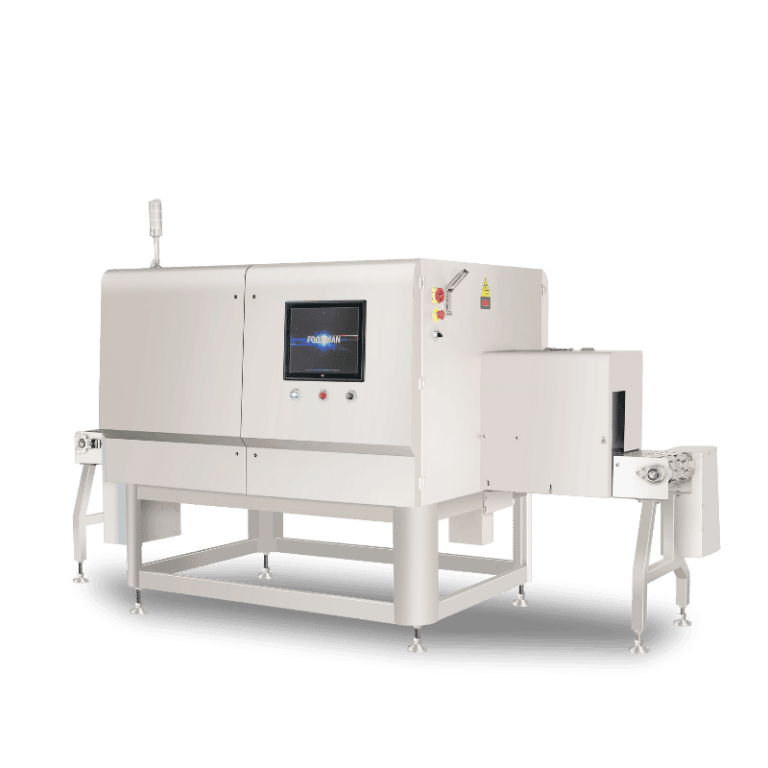Introduction to ESG in Manufacturing
In today’ s manufacturing landscape, companies are increasingly adopting ESG (Environmental, Social, Governance) principles to enhance sustainability, ensure product safety, and improve ethical practices. Manufacturers are now prioritizing environmental responsibility, better working conditions, and transparent governance to meet both consumer expectations and regulatory standards. One significant way to achieve these goals is through advanced technologies like X-Ray inspection systems. These systems are transforming production lines by improving quality control, reducing waste, and ensuring the safety of products, all while supporting ESG goals. X-Ray inspection machines are essential tools in achieving operational efficiency and fostering a sustainable, responsible manufacturing process.
What is ESG (Environmental, Social, Governance)?
ESG stands for Environmental, Social, and Governance — three key factors used to assess the sustainability and ethical impact of a company’ s operations. The Environmental aspect focuses on a company’ s efforts to minimize its environmental footprint, including energy usage, waste reduction, and sustainable sourcing. The Social component involves ensuring fair labor practices, consumer protection, and community engagement. Governance pertains to how a company is managed, its business ethics, and transparency. Integrating ESG into manufacturing practices is now critical, as it enhances a company’ s reputation, attracts investors, and helps ensure compliance with evolving regulations.
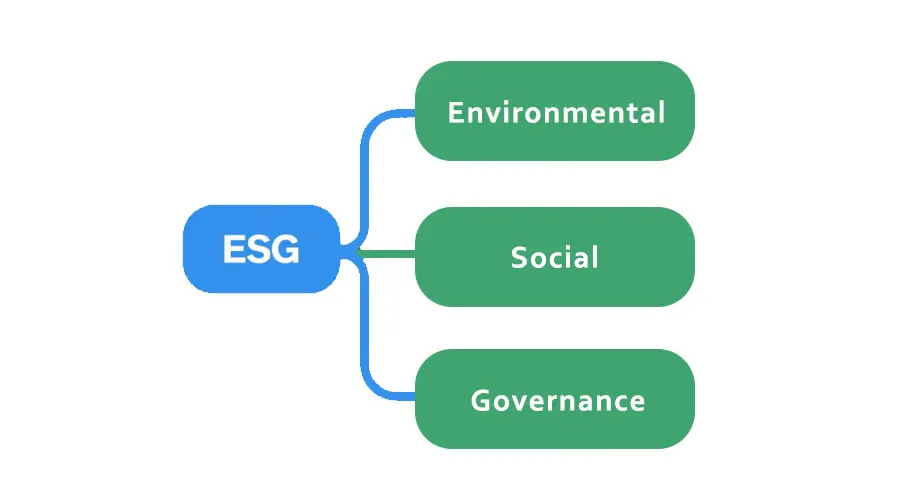
Why ESG Goals Matter for Modern Manufacturers
Modern manufacturers are increasingly expected to demonstrate a commitment to sustainability. ESG goals not only help companies improve their public image and attract responsible investments but also enable them to streamline their operations, reduce costs, and minimize environmental impact. For example, implementing X-Ray inspection systems in manufacturing processes allows companies to improve product quality and eliminate defects early in the production cycle. This enhances product safety and reduces waste, helping manufacturers achieve environmental sustainability goals. Moreover, these systems ensure that products meet social responsibility standards by detecting contaminants and ensuring consumer safety.
The Growing Demand for Sustainable and Responsible Production
As the global focus shifts toward sustainability, manufacturers are feeling increased pressure to adopt responsible production practices. Consumers are more informed and expect companies to be environmentally and socially conscious. X-Ray inspection machines play a crucial role in meeting this demand by ensuring higher product quality, reducing waste, and improving overall operational efficiency. These systems help manufacturers comply with safety standards, reduce material waste, and lower energy consumption, making them a vital tool in achieving both Environmental and Governance goals.
In conclusion, incorporating ESG principles into manufacturing is not just about meeting regulatory requirements but also about building a sustainable and ethical business. With the help of advanced technologies like X-Ray inspection systems, manufacturers can enhance product safety, reduce waste, and improve operational efficiency, ultimately contributing to a more responsible production process.
Environmental Impact: Reducing Waste and Energy Consumption
In today’ s manufacturing world, companies are under increasing pressure to minimize their environmental footprint. One way industries are achieving this is by integrating X-Ray inspection systems into their production lines. By combining advanced accuracy with energy-efficient designs, X-Ray inspection machines not only ensure product safety but also contribute to greener, more responsible operations.
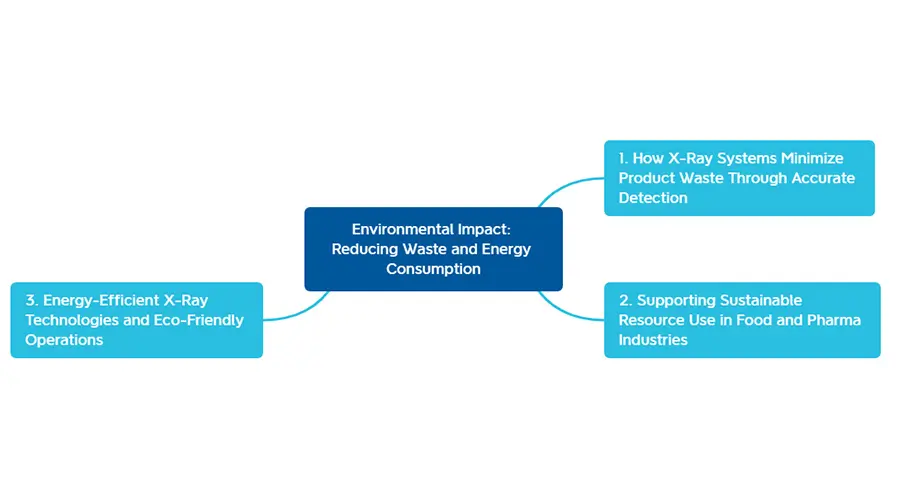
How X-Ray Systems Minimize Product Waste Through Accurate Detection
One of the major environmental benefits of using X-Ray inspection technology is the significant reduction of product waste. Traditional inspection methods can often lead to unnecessary rejections or missed contaminants. In contrast, modern X-Ray inspection systems provide highly precise detection of foreign bodies, defects, and inconsistencies, ensuring only truly defective products are removed. This precision minimizes material loss, reduces rework, and leads to more efficient use of resources across food and pharmaceutical manufacturing.
Supporting Sustainable Resource Use in Food and Pharma Industries
Both the food and pharmaceutical sectors are increasingly focused on sustainable production practices. X-Ray inspection machines help these industries maximize resource efficiency by catching defects early, preventing large batches of products from being wasted. In food production, for example, accurate detection of bones, stones, or other contaminants prevents costly product recalls and reduces the need to discard otherwise safe materials. In pharmaceuticals, ensuring packaging integrity with X-Ray inspection systems supports strict compliance and reduces waste associated with rejected shipments.
Energy-Efficient X-Ray Technologies and Eco-Friendly Operations
Today’ s X-Ray inspection equipment is designed with energy-saving technologies that align with global sustainability initiatives. Many modern X-Ray inspection systems operate at lower power without compromising performance, helping companies reduce their overall energy consumption. By adopting eco-friendly X-ray technologies, manufacturers not only lower operational costs but also meet increasingly stringent environmental regulations, strengthening their commitment to greener production practices.
Social Responsibility: Ensuring Product Safety and Consumer Trust
In modern manufacturing, social responsibility extends beyond internal operations—it’s about delivering safe, high-quality products that consumers can trust. Leveraging technologies like X-Ray inspection ensures that companies not only meet industry standards but also reinforce their commitment to public health and social accountability.
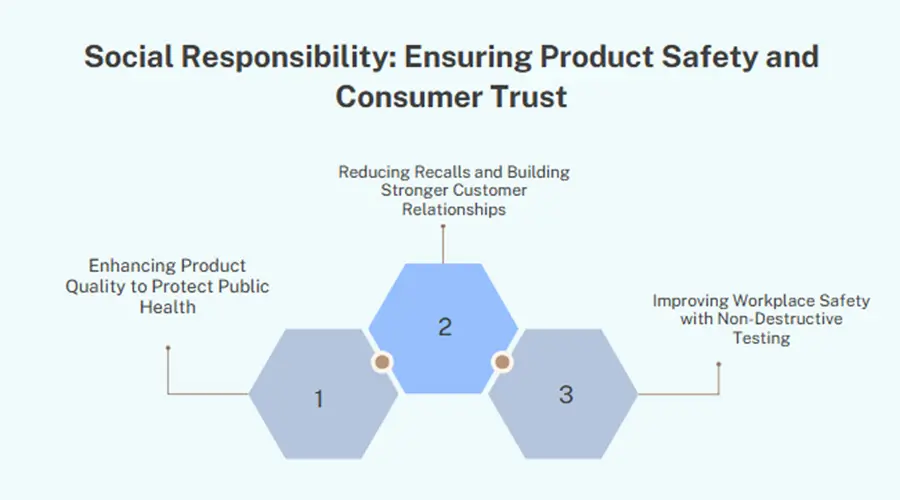
Enhancing Product Quality to Protect Public Health
By using advanced X-Ray inspection systems, manufacturers can detect hidden defects and contaminants with high accuracy, ensuring that only safe products reach the market. This proactive approach to quality control is critical in industries like food and pharmaceuticals, where even minor issues can have serious public health consequences.
Reducing Recalls and Building Stronger Customer Relationships
Product recalls can severely damage a company’s reputation and customer trust. X-Ray inspection machines help prevent costly recalls by identifying issues early in the production process. Consistently delivering safe and defect-free products strengthens brand credibility and fosters long-term customer loyalty.
Improving Workplace Safety with Non-Destructive Testing
Implementing X-Ray inspection not only protects consumers but also improves workplace safety. Non-destructive testing (NDT) allows operators to assess product integrity without exposing them to harmful materials or dangerous inspection methods, promoting a safer and more efficient working environment.
Governance: Supporting Compliance and Transparency
In today’s manufacturing environment, strong governance is fundamental for long-term success. Leveraging advanced X-Ray inspection technologies ensures companies not only comply with industry standards but also build greater transparency and accountability across their operations.
Meeting Regulatory Standards (FDA, GMP, ISO) Through Reliable Inspection
Regulatory compliance is non-negotiable for industries such as food and pharmaceuticals. Standards like FDA regulations, Good Manufacturing Practice (GMP), and ISO certifications demand rigorous quality control processes. Modern X-Ray inspection systems offer consistent, high-accuracy detection of contaminants and defects, helping manufacturers confidently meet these strict requirements while maintaining production efficiency.
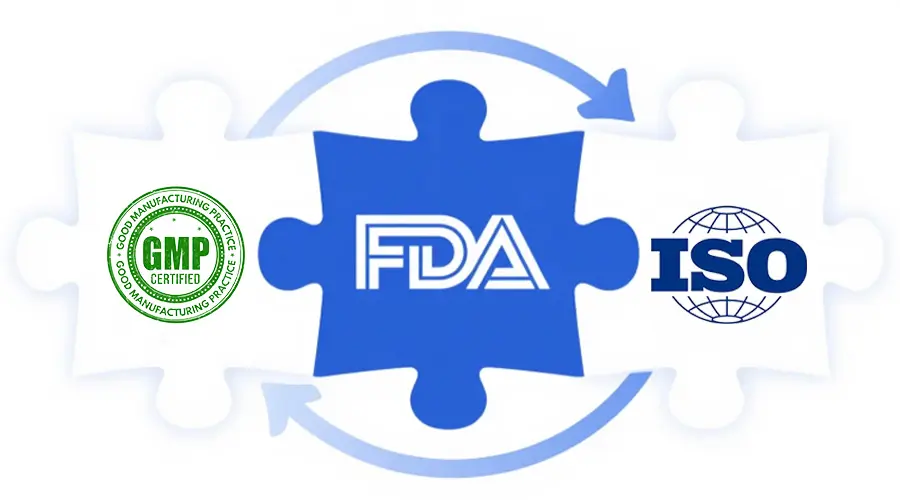
Data Traceability and Audit-Ready Reporting with Modern X-Ray Systems
Beyond detection, today’s X-Ray inspection systems are equipped with intelligent software that supports complete data traceability. Inspection results can be stored, retrieved, and formatted into detailed audit-ready reports, simplifying internal reviews and external regulatory audits. This level of transparency helps manufacturers prove compliance, maintain certifications, and continuously improve operational performance.
Strengthening Corporate Integrity and Risk Management
Investing in X-Ray inspection technology goes beyond compliance—it strengthens a company’s overall governance framework. By ensuring the consistent quality and safety of products, companies can minimize risks such as recalls, legal penalties, and reputational damage. Transparent, verifiable inspection processes reinforce corporate integrity and contribute to building long-term trust with regulators, partners, and consumers.
Case Studies: X-Ray Systems Driving ESG Success
Real-world examples clearly show how X-Ray inspection systems are helping manufacturers achieve their Environmental, Social, and Governance (ESG) goals. From reducing waste to strengthening compliance and building sustainable brands, X-Ray inspection machines are playing an increasingly critical role.
Waste Reduction Achievements in Food Manufacturing
In the food industry, minimizing waste is crucial for both environmental sustainability and cost efficiency. By integrating advanced X-Ray inspection systems into production lines, manufacturers have significantly reduced the number of defective or contaminated products reaching final packaging. These systems catch foreign materials early, allowing only safe, high-quality items to move forward. As a result, companies can dramatically cut down on wasted resources, reduce landfill contributions, and improve their environmental footprint.
Compliance Improvements in Pharmaceutical Production
Pharmaceutical manufacturers face some of the strictest compliance requirements. X-Ray inspection systems have proven invaluable in ensuring product integrity and meeting regulatory standards such as GMP, FDA, and ISO certifications. By providing reliable, non-destructive testing and comprehensive data records, X-Ray inspection machines help pharmaceutical companies pass audits smoothly, lower the risk of recalls, and maintain the highest safety standards.
Building a Sustainable Brand Reputation Through Quality Assurance
Today’ s consumers care deeply about the ethics and quality behind the brands they support. Companies that utilize X-Ray inspection systems demonstrate a commitment to product safety, environmental responsibility, and corporate integrity. Through consistent quality assurance enabled by X-Ray technology, businesses not only reduce operational risks but also strengthen their brand reputation, making sustainability and responsibility key parts of their market appeal.
Conclusion
As manufacturing continues to evolve toward greater sustainability and responsibility, the role of X-Ray inspection systems becomes even more critical. These technologies not only enhance product quality and safety but also align closely with Environmental, Social, and Governance (ESG) principles, making them a smart long-term investment.
Why Investing in X-Ray Systems Supports Long-Term ESG Strategies
Adopting X-Ray inspection machines offers immediate operational benefits—such as waste reduction, improved compliance, and enhanced consumer trust—that directly contribute to ESG goals. In the long run, manufacturers who prioritize X-Ray inspection technology position themselves as leaders in sustainability, safety, and transparency, all while optimizing their production efficiency and protecting brand value.
Future Outlook: X-Ray Technology and Sustainable Manufacturing
The future of manufacturing will demand even greater accountability and innovation. As X-Ray inspection systems continue to advance—becoming more energy-efficient, data-driven, and AI-enhanced—they will further empower manufacturers to meet higher environmental standards, ensure public health, and uphold ethical governance practices. Investing in modern X-Ray technology today is an essential step toward building a sustainable and responsible manufacturing future.

